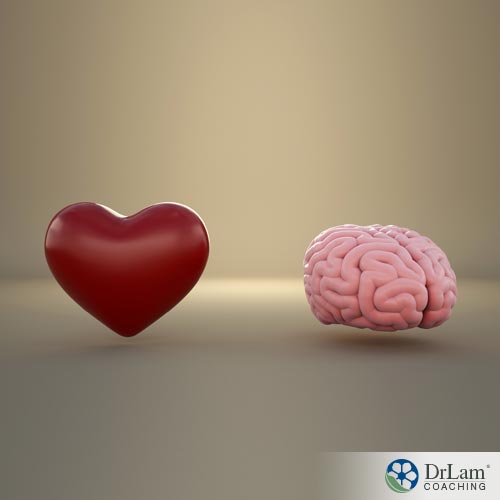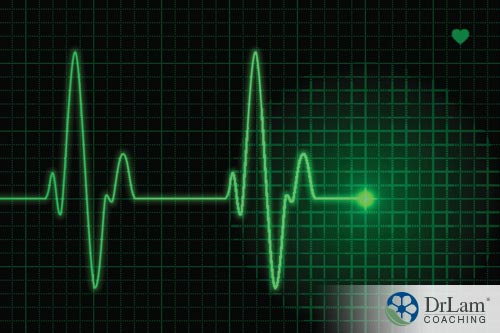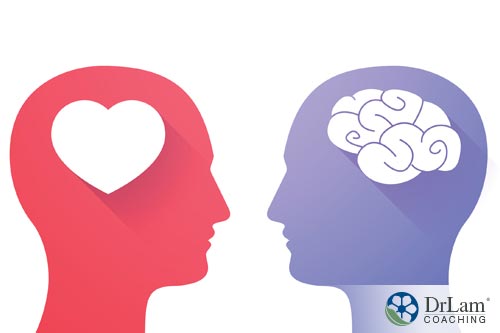 For millennia, in cultures across the world, the heart has held a central place in discourses about health, well-being, emotions, and especially spirituality. We have so many phrases that revolve around the heart. When in emotional pain, we say things like “heartbreak” and “with a heavy heart,” or when asking someone to be authentic, we say “speak from your heart” or “follow your heart.” Even with the discovery of communication within the heart brain system, science and medicine still keep telling us over and over again that there’s no such thing as intelligence or feelings that come from the heart, but rather that it’s all in the brain. Our physical and psychological attachment to the idea of the heart having its own wisdom, we are told, is just an old wives’ tale.
For millennia, in cultures across the world, the heart has held a central place in discourses about health, well-being, emotions, and especially spirituality. We have so many phrases that revolve around the heart. When in emotional pain, we say things like “heartbreak” and “with a heavy heart,” or when asking someone to be authentic, we say “speak from your heart” or “follow your heart.” Even with the discovery of communication within the heart brain system, science and medicine still keep telling us over and over again that there’s no such thing as intelligence or feelings that come from the heart, but rather that it’s all in the brain. Our physical and psychological attachment to the idea of the heart having its own wisdom, we are told, is just an old wives’ tale.
But this modern brain-centric view is outdated. Studies showing the importance of the heart in the heart-brain system have actually been around for decades, and the research continues to accumulate. The heart has its own intelligence, and its neurological system and electromagnetic field are actually much larger and more powerful than the brain’s.
This is really exciting news, which hopefully will spread to the mainstream sooner rather than later. Not solely to validate what we’ve collectively known intuitively throughout the ages, but also because of the potentially profound effects on our health, well-being, and sense of fulfillment.
It is also of particular interest to those who suffer from conditions that are triggered or aggravated by stress. This applies to most chronic conditions, but especially conditions like Adrenal Fatigue Syndrome (AFS).
In other articles, we have covered the importance of the gut-brain connection and demonstrated the many reasons why the gut has been called “the second brain” by practitioners of traditional medicine, such as those who work in the field of Traditional Chinese Medicine and Ayurveda. Western medicine, as well, seems to be increasingly aware of this connection and the impact it can have on our health.
We’ve also seen just how interconnected these two systems are, and just how much the gut influences the brain on a physiological level, which then affects our psychology. Many studies show that chronic inflammation is actually one of the biggest culprits in depression and anxiety issues, and inflammation almost always begins in the gut. The good news is how much you can greatly improve your mood and focus simply by changing your diet.
As you can tell, there is a pattern emerging: the body is interconnected and you are better off treating it as a whole rather than focusing on just one part (such as the stomach or the eyes), or treating just the symptom (such as an ulcer or blurry vision).
This is the approach we work with when dealing with adrenal fatigue, based on the understanding that the adrenal glands affect, and are affected by, every other organ and system in the body. This is especially evident in the NeuroEndoMetabolic (NEM) Stress Response, which is the body’s global response to stress, which we’ll discuss in more detail as it applies to the heart brain system.
Taking the holistic view of health and the body is the Functional Medicine approach, and we’ve found that this is the best lens to use when looking at the heart brain system as well.
 Functional Medicine is an exciting new method that combines the scientific rigor of conventional medicine and the timeless wisdom of traditional medicine by applying the following principles:
Functional Medicine is an exciting new method that combines the scientific rigor of conventional medicine and the timeless wisdom of traditional medicine by applying the following principles:
As you can see, the Functional Medicine approach is the next evolutionary step in modern medicine. This approach gives you, the patient, a measure of involvement and control that you may have never experienced before in conventional medicine. We highly recommend that you try it if you have never done so before, especially if you are suffering from a chronic condition.
The Functional Medicine approach is the antidote to the typical compartmentalization of the stress response. It goes from the organ-centered view of the neuroendocrine system to taking a holistic, big-picture view of the entire NEM. And now, with new research coming out about the heart brain system, Functional Medicine will most definitely incorporate it into its methodology as well.
Taking into consideration your lifestyle, environment, and genetic makeup, as well as the NEM model – which is looked at as a global response to stress, made up of all the different systems and organs working together to combat negative effects – is a much more complete and balanced approach to dealing with modern life’s biggest health and wellness challenge.
The NEM is divided into six circuits: the hormonal, the metabolic, the neuroaffect, the cardionomic, the inflammation, and the detoxification responses. The heart-brain system is intimately involved in these circuits and in the body’s stress response as a whole. As we will see later, it can be used to your advantage when dealing with stress in order to increase your resilience. It can also be useful in your journey of recovery from conditions like AFS.
 Although the field of investigation in Functional Medicine becomes much broader and produces a lot more data to work with due to taking so many different things into consideration, it’s a much more hopeful and patient-centric way of getting to the root of the problem and solving it. Symptom relief is not the top priority. This may mean a longer waiting period for relief, but in addressing the root cause, symptom relief will eventually come, and you will have a much greater chance of maintaining that state of healing.
Although the field of investigation in Functional Medicine becomes much broader and produces a lot more data to work with due to taking so many different things into consideration, it’s a much more hopeful and patient-centric way of getting to the root of the problem and solving it. Symptom relief is not the top priority. This may mean a longer waiting period for relief, but in addressing the root cause, symptom relief will eventually come, and you will have a much greater chance of maintaining that state of healing.
This is also a much safer way to deal with chronic conditions, as it can lessen or prevent the side effects of the usual array of medications used to relieve symptoms rather than deal directly with the underlying cause.
Now that you have a good footing on how Functional Medicine works and how to look at your physical and mental health as a unified whole, we can go a little deeper into how the heart brain system is involved, and how you can utilize it to your advantage when dealing with AFS, or just with daily stress. We’ll start by looking at how the heart’s field affects your health, as well as how it can affect your cognitive processes and even your behavior.
Have you ever been in a situation where someone said or did something and suddenly you found your heart racing and pounding in your chest?
A heart rate experiment was done on a man whose wife had just said something that upset him. Heart rate is measured in BPM, and the normal resting range for adults is between 60 to 100 BPMs. His BPM shot up to 140 for half an hour and stayed elevated above normal for another hour and a half, even after the argument had ended.
 Now think about heart rate during exercise. Not even rigorous cardio workouts can keep your heart rate that high for so long after you’ve completed your workout. This indicates how much your emotional state affects your physiology. According to the heart brain system, you can also affect your emotional state by manipulating your physiology.
Now think about heart rate during exercise. Not even rigorous cardio workouts can keep your heart rate that high for so long after you’ve completed your workout. This indicates how much your emotional state affects your physiology. According to the heart brain system, you can also affect your emotional state by manipulating your physiology.
But you already knew all of this intuitively. You’ve felt it in your body when you were emotionally triggered, and you’ve felt the shift in your emotional state when you take certain postures or do certain breathing exercises. Now, research is catching up with your experience, and there’s even a branch of psychology dedicated to this particular interplay between body and mind, called psychophysiology.
The heart has its own brain, the “heart brain” – a very complex intrinsic nervous system. If this is news to you, that’s only because it hasn’t made medical headlines. The information and some of the research, however, date back to the late 1800s. It didn’t even take any equipment or technology fancier than a knowledge of basic anatomy to see this clearly.
With more and more accurate research, we are starting to discover that, in the heart-brain system, the heart sends a lot more information to the brain than the brain sends to the heart.
Over the last decade or so, there has been an emerging field that focuses on communication in the heart-brain system, the pathophysiological interactions between the nervous system and the cardiovascular system, called neurocardiology. This field is where we are getting much of this exciting information.
Studies are beginning to show that the groups of neurons of the heart – the intrinsic cardiac ganglia – have short-term memory, long-term memory, neuroplasticity (the ability to reorganize synaptic connections in response to injury, experience, or learning), and neurogenesis (the growth of new nervous tissues).
We are also seeing that the patterns in the neural signals that come from the heart affect the brain centers that are involved in self-regulation, emotional experience, and perception. This is especially interesting for AFS, as we’ll cover later. Many tools and techniques are now being tested to help in understanding not just the heart brain system, but also how to use it for health, well-being, and resilience.
Monitoring the variability in heart rate – the HRV — is one of the most important tools that can help us understand communication in the heart-brain system and the state of the autonomic nervous system (ANS). It can also help us predict health problems as early as two years prior to the manifestation of symptoms.
Also, how well the ANS is functioning is an excellent indicator of stress. As we’ve seen over and over again, chronic stress has been one of the biggest factors in aggravating — and sometimes causing — chronic health problems including, but not limited to, AFS.
The HRV test can be done in-office. And it can be used to conduct a simple stress test. All it takes is attaching sensors to your chest to record your resting heart rate, which is done by getting your reading done while you are lying down. The “stress” results are reached by standing up. That’s because stress is created when you go from resting to standing; when standing, your circulation has to exert against gravity in order to get blood flowing to your head.
Clinically speaking, HRV can help with:

HRV in healthy, normal people changes with every heartbeat, creating what we call the heart rhythm. The less the HRV, the more the need for concern. HRV decreases with age, and it can also be a good predictor of how well you are aging and how vulnerable you are to age-related conditions. This doesn’t just apply to human beings but is seen in the aging process across different species.
A lower HRV isn’t just a predictor of health problems such as diabetes, cancer and even all-cause mortality; it is also a predictor of behavioral problems. A strong HRV, on the other hand, is an indicator of the ability to adapt to stress and display psychological resilience.
Higher resting HRV levels correlate with superior performance on tasks that require executive functions of the brain, especially of the prefrontal cortex. This is the front part of the brain that is involved in complex functions, including things like impulse control, planning, prioritizing information, behavioral adjustments, and organizing emotional reactions.
Changes in HRV can actually reflect specific changes in the autonomic state. For example, your HRV while you sleep can indicate whether the emotional quality of your dream is pleasant or unpleasant.
These are just a few examples of how HRV can help us better understand the communication of the heart brain system. But how do you actually read the HRV to determine the emotional state of the patient or research subject?
This is done through heart rhythm patterns.
 We’re going to be using the terms coherence/coherent and incoherence/incoherent throughout the rest of the article, so it’s important you understand what they mean, when it comes to the heart brain system.
We’re going to be using the terms coherence/coherent and incoherence/incoherent throughout the rest of the article, so it’s important you understand what they mean, when it comes to the heart brain system.
Coherence in HRV means there is an order and stability to the waveform pattern. The heart rhythm has more rounded and coherent waveforms. Incoherence in HRV means that the waveform patterns are erratic and have jagged, sharp peaks. The heart rhythm has more incoherent waveforms.
Coherence reflects positive emotional states such as appreciation, courage, love, enthusiasm, etc. Incoherence in HRV shows negative emotions, such as frustration, anxiety, worry, irritation, etc. At this point in time, it’s possible to determine someone’s emotional state with 75% accuracy just from their heart rhythm, including the differences in negative emotional states, such as anger or worry, for example.
HRV rhythm has a strong and direct impact on mental and physical performance, with coherence facilitating cognitive functions and reinforcing emotional stability and positive emotional states. Different independent studies confirm that coherence is the best state for this, as well as for regenerating natural physical processes.
Incoherence, on the other hand, inhibits brain function, social and situational awareness, the ability to self-manage, and the capacity to care.
Another distinction we have to make is the one between coherence and relaxation, because although they seem related, in fact they are not. In fact, some coherence techniques are quite the opposite of relaxation techniques.
For example, coherence techniques are used with professional athletes, Olympic athletes, and military and law enforcement. There is a resilience program for the US Navy based on coherence techniques. In all of these fields, the goal is not to shift the participants into a relaxed state before a match or a drill, but rather to get them into a peak performance state. This is done through coherence, where the body and brain are in a state of synchronization.
Coherence can be achieved at any heart rate, and with practice you can have a coherent heart rhythm even with a heart rate over 100. It can also be done with slow heart rates, or when you’re in a “relaxed state.” It’s also interesting to note that you can be in a “relaxed state” with a low heart rate while your heart rhythm is incoherent.
This is not to say that relaxation is not a good skill to learn; it certainly is. But it’s different from a coherent heart rhythm, and the ideal would be to have both of these tools in your toolkit.
There are several areas of the brain that are in direct communication with the heart.
The pathway to the amygdala is only one synapse away; it is a direct neural pathway. The cells in the core nucleus of the amygdala are all synchronized with the cardiac cycle. This means that every time the heart beats, cells in that core nucleus fire with it. This is why the amygdala reflects the heart rhythm patterns.
The thalamus has many different functions, including synchronizing the electrical activities of neurons. It also has a direct pathway to the heart, and when you get an incoherent heart rhythm pattern that affects the thalamus, this in turn inhibits cortical synchronization.
The prefrontal cortex and the frontal cortex help with reaction times, the coordination of tasks, and perhaps most importantly, give you the ability to understand and predict how your current actions and behaviors might affect your future. This can include such complex things as setting goals, the feeling of achievement, planning, and the ability to discriminate what the appropriate behavior is in specific contexts.
When the cortex is desynchronized, all of these abilities become inhibited. That’s why, for example, you can see difficulties in impulse control, problems with behavioral regulation, and a lack of foresight.
 An example that you might be familiar with: let’s say you get into a heated argument and you shout or say something out of character. A short while later you are perplexed, regretting the outburst and wondering if you had lost your mind for a moment. But actually, that was just an inhibition of your cortex, which happened in milliseconds, much faster than any hormonal changes!
An example that you might be familiar with: let’s say you get into a heated argument and you shout or say something out of character. A short while later you are perplexed, regretting the outburst and wondering if you had lost your mind for a moment. But actually, that was just an inhibition of your cortex, which happened in milliseconds, much faster than any hormonal changes!
But let’s say that you’ve been practicing techniques that bring coherence to your HRV rhythm. Due to the direct pathways of your heart brain system, you now have synchronization with the cortex, and you’re able to have faster reaction times and more self-regulation. That is good news, including for your hormones.
Speaking of hormonal effects, although they may be slower than the heart brain system connections, they are still a very important element to the NEM as well as every other system in the body. Sometimes, hormones may already be off-balance and adversely affecting the heart and the brain. This is something we see in conditions like AFS, for example. If that’s your case, read on.
The ANS, which, as we’ve mentioned, is a great indicator of stress and has important functions in the heart-brain system, is part of the peripheral nervous system, one of the two main branches of the nervous system. The other main branch of the nervous system is the central nervous system.
The word “autonomic” means “unconscious and involuntary.” The autonomic nervous system controls metabolic and physiological processes that are not conscious, though some aspects of them may be influenced consciously for a period of time. These include the respiratory system, the cardiovascular system, the gastrointestinal system, the immune system, and the endocrine system.
The ANS itself has 5 branches. The most well known is the sympathetic nervous system (SNS) – which is all about exertion and energy expenditure, like exercise, stress, oxidation, and being awake – and the parasympathetic nervous system (PNS) – which is all about relaxation and energy recovery, like rest and sleep.
The ANS works intimately with the NEM, and is especially prominent in the NEM’s neuroaffect response. The gut, the brain, and the ANS work as a team to manage the neuroaffect response, with the hypothalamus and pituitary gland in the brain acting as the hormone and metabolism supervisors.
These two control centers in the brain are also part of the HPA axis of your hormonal response, which we can consider to be the “first responder” to stress. It is a hormone cascade that sends signals from the brain to the adrenal glands to secrete cortisol. Once the cortisol has finished the job, any excess is used as a message to the brain that stimulating the adrenals is no longer necessary.
But the hypothalamus and pituitary gland communicate with many other organs and systems, also by either stimulating them or inhibiting them.
 Closely linked to the nervous system and the neuroaffect response is the cardionomic response of the NEM, with the heart as its central figure. This response readies the heart, blood vessels, and lungs for the “fight or flight” response by increasing oxygen-filled blood flow. The signals that turn this response on are the hormones cortisol, epinephrine, and norepinephrine, which are regulated by the SNS.
Closely linked to the nervous system and the neuroaffect response is the cardionomic response of the NEM, with the heart as its central figure. This response readies the heart, blood vessels, and lungs for the “fight or flight” response by increasing oxygen-filled blood flow. The signals that turn this response on are the hormones cortisol, epinephrine, and norepinephrine, which are regulated by the SNS.
But if you’re suffering from AFS, these responses are dysregulated, and you may find your “fight or flight” response constantly triggered and your cardiovascular system always on high alert. This is what is known as Reactive Sympathetic Overtone (RSO), also known as adrenaline dominance. In RSO, your body is so weak that it cannot produce any hormones to help you deal with stress. Instead it releases norepinephrine into your body. This can create the unpleasant experience of having faster than normal resting heart rates, strong heartbeats, heart palpitations, POTS-like symptoms, anxiety, irritable bowels, panic attacks, and even temperature intolerance. If your body continues to stay in this mode, eventually things may worsen and you can enter Reactive Sympathoadrenal Response. In this state, the body produces more epinephrine instead of norepinephrine and your heart is subsequently affected more as well.
If adrenal fatigue can cause these imbalances in the neuroaffect and cardionomic responses, then it is safe to say, from a Functional Medicine approach, that the opposite is also true. The nervous system and the cardiovascular system also have an effect on adrenal fatigue, whether positive or negative.
 Some of the symptoms of AFS are quite similar to those you can get with heart rhythm incoherence, such as anxiety, depression, and brain fog, as well as an inability to handle stress, or inability to self-regulate.
Some of the symptoms of AFS are quite similar to those you can get with heart rhythm incoherence, such as anxiety, depression, and brain fog, as well as an inability to handle stress, or inability to self-regulate.
This means two things:
Cortisol, the adrenal hormone that is most affected by adrenal fatigue, is responsible for vital tasks such as regulating blood pressure and blood sugar levels, maintaining heart and blood vessel functions, suppressing the immune system after it has done its job, and neutralizing inflammation.
In the beginning phases of AFS, cortisol levels actually rise in order to meet the growing demand for stress reduction. But if you’re not able to manage your stress and it continues to be chronic, your adrenal glands become so overworked that at some point they are exhausted and you enter into the more advanced stages of AFS. This is when cortisol levels drop and your body is left to fight stress without one of its most valuable allies.
By recovering from adrenal fatigue, your cortisol levels get up to standard again, and so your hormonal response is capable of handling stress better. It’s one way to help you achieve a level of hormonal balance that can support you in reaching a synchronized state in your heart brain system.
Recovery from AFS will revolve around adopting a proper adrenal fatigue diet, getting lots of rest, improving the quality of your sleep, and getting the right kind (and right amount) of exercise. With more advanced stages, you’ll probably begin with adrenal breathing exercises, which also help with stress management. As you get a little stronger, you can move onto adrenal yoga exercises.
Of course, it goes without saying that managing stress is a must for recovering from AFS. Here is where utilizing the heart brain system can help.
 There’s no getting away from the stresses of modern life: the fast pace, the connectivity that brings us closer together yet simultaneously farther apart, the ease of access to health foods and bad news at the same time, the environmental toxins and air pollution, the growing financial demands, and the current unhealthy standards of nutrition and fad diets. All of these variables have a toll on the heart-brain system.
There’s no getting away from the stresses of modern life: the fast pace, the connectivity that brings us closer together yet simultaneously farther apart, the ease of access to health foods and bad news at the same time, the environmental toxins and air pollution, the growing financial demands, and the current unhealthy standards of nutrition and fad diets. All of these variables have a toll on the heart-brain system.
So, unless you’re planning on going off the grid or living a secluded life in the countryside, you will have to find ways to build your capacity to handle stress and regulate your emotions. Otherwise, you can end up with a host of physical and psychological imbalances that can really affect your day-to-day life.
Self-regulation seems to be one of the great missing links in the handling of the majority of physical health issues, mental health issues, and even in social problems that are pervasive in our modern world. The fact cannot be denied that people are generally stressed out, exhausted, and overwhelmed, and just don’t know how to manage their reactions.
You know that your emotions affect your physiology - you can feel it in your body. But through testing, we can actually monitor how emotions actually affect your nervous system activity, your blood circulation, your hormones, and your heart rhythm.
We have seen that emotions affect these things much more than thoughts do! In lab tests, we don’t see many changes when you’re thinking; it’s only when an emotion is triggered by a thought, or by some other stimulus, that your circulation, nervous system, and hormones start to be affected.
This is not to say that you can’t change your emotions by changing your thoughts. Positive thinking has its place, and there are many wonderful techniques that can help you calm your mind enough to stop the cycles of negative thinking that trigger negative emotions. Meditation is an excellent practice that helps with this.
But that doesn’t take away from the conclusion that emotions are the primary drivers of the activities in the body’s systems, and that they are what motivates you to do what you do and determine how engaged you are in life. So the bottom line is that, by learning to self-regulate your emotions, you gain a new level of control over the quality of your life and your health that was previously untapped.
Techniques to help you self-regulate and achieve a coherent state in your HRV as recommended by the HeartMath Institute, one of the pioneers of researching the heart brain system, include things like:

Using such techniques while also following a structured adrenal fatigue recovery program is one way to take the Functional Medicine approach of holistic health. As you begin to get into a state of coherence, your ability to increase mental clarity, emotional stability and resilience to stress will help reduce the pressure on your adrenal glands to produce anti-stress hormones.
There’s one way to make these changes stick – by shifting your baseline in the heart-brain system.
Basically, one of the brain’s main roles is acting as a pattern recognition and storage machine. It analyzes patterns, whether on a physiological, cognitive, or emotional level. How does it analyze these patterns? By comparing new input with patterns that it has recognized previously and stored as a reference. These stored reference patterns are called inner baselines.
In very simple terms, to the brain, a match between the new input and the baseline is good and a mismatch is bad. So if there is a match, you feel comfortable, with no feelings of unease or threat. A mismatch, on the other hand, will signal for your attention and trigger emotions.
Here is where the problem lies: what if your baseline is maladapted? This can happen when you live in certain stressful conditions for prolonged periods of time to the point that your baseline, your comfort zone, is actually a state of discomfort.
For example, let’s say you grew up in a home with emotionally unavailable parents. As an adult, you feel comfortable, though not fulfilled, with an emotionally unavailable partner because that is your familiar maladapted baseline.
Or let’s say you’re a schoolteacher and you have some kids in your classroom that always create chaos. They may be in an emotionally or materially chaotic home and therefore they need to create that baseline wherever they go because that’s all they know.
 Anxiety, worry, post-traumatic stress disorder, anger, laziness, and any other negative state may actually become inner baselines if they are lived with as the norm for a period of time. This means that the opposite can also occur. If you sustain a positive shift in your baseline for long enough, this new reference will stick and behavioral changes that come along with it will sustain.
Anxiety, worry, post-traumatic stress disorder, anger, laziness, and any other negative state may actually become inner baselines if they are lived with as the norm for a period of time. This means that the opposite can also occur. If you sustain a positive shift in your baseline for long enough, this new reference will stick and behavioral changes that come along with it will sustain.
But do remember: when you shift your baseline, you are intentionally creating a mismatch between input and current baseline, which will feel uncomfortable for a while. Stick with it long enough and then you’ll relax into the new baseline.
These shifts are basically shifts in the heart rhythm, from a state of incoherence to a state of coherence. Some benefits of making such a shift from HRV incoherence to HRV coherence by using self-regulation techniques include:
And much more…
Can you imagine the implications this could have for you in your health and personal life, or how you can use this if you work with others as a therapist, physician, teacher, or in any other capacity?
Creating that healthy inner baseline reference will also affect your hormones. You’ll be much more capable of handling stress. Studies are now showing that it’s not about what the stressor is or how much stress you are exposed to, it’s about how you react to, or interpret, this stress.
If you are able to take a stressful situation as a challenge to extract the benefits or positive effects, you are basically turning something that could damage your health and well-being into a source of strength, resilience, and health. The more you train yourself to self-regulate, the stronger this capacity becomes. The more you are able to do this, the less pressure you put on your adrenals and NEM to compensate for the presence of stress in your everyday life.
 Due to the way the heart brain system is organized, with the cardiovascular feedback being a major input in the brain’s pattern analysis, you can actually use the heart to set a baseline reference. Changes in the heart’s input to the brain through the heart brain system actually have to occur in order to reset your baseline.
Due to the way the heart brain system is organized, with the cardiovascular feedback being a major input in the brain’s pattern analysis, you can actually use the heart to set a baseline reference. Changes in the heart’s input to the brain through the heart brain system actually have to occur in order to reset your baseline.
This means that only using your thinking mind to try to shift your reference will not work. You need to use your entire body, especially the heart, to establish a positive and healthy baseline for yourself.
If you’re still unsure how the heart could possibly affect your mind, think about this: the heart’s electromagnetic field extends beyond the body by several feet, while the brain’s electromagnetic field only extends beyond the body by about an inch. You can actually measure the heart’s magnetic field with magnetometers in hospitals and labs, and when you look at the information carried by these fields, you can see their patterns.
This magnetic field that radiates from the heart can be detected by the nervous systems of other people and animals. This is what’s called “energetic communication” and why you can sometimes enter a room and “feel” the tension without a word being said or a gesture being made that would communicate it directly.
Now let’s say you learn some techniques that get you into a coherent state quickly. You can actually affect the state of those around you as well, as they will begin to sync their energy with yours.
What’s even more powerful than syncing with the coherence of other people is syncing with the earth’s magnetic field. In fact, when you feel good emotionally, your coherent heart rhythm is actually resonating at the same frequency as the earth’s primary frequencies (0.1 hertz).
Using the heart brain system as a way to establish healthier baselines, improve heart rate variability, and increase resilience through the use of coherence techniques can be a wonderful addition to your AFS recovery toolkit, but it should not take the place of the tried and true “musts” such as diet, exercise, rest, and proper guidance by an experienced professional.
In some cases, especially if you are in an advanced stage of AFS, you will need to consult your doctor first before using biofeedback machines or new breathing techniques. You do not want to increase the risk of adrenal crashes or any adverse or paradoxical reactions. As of yet, these techniques have not been thoroughly studied or researched in regards to AFS recovery.
However, if you’re already recovering from AFS, and you feel your state is not too fragile, you can experiment with one technique at a time. Just make sure you track the changes that occur for long enough in order to be able to assess whether it is really helping you or not.
As always, it is better to take one small step at a time than to overwhelm yourself with too many changes at once. So if you’re just starting your journey of AFS recovery, or changing your lifestyle for any other health reason, it is always better to wait a while first before adding new techniques. Changing your diet and exercise should remain a top priority, and once they have become second nature to you, then you can consider adding other methods.
We are still very excited about this new research in the heart-brain system, and how achieving a coherent state can help people self-regulate and face the challenges of modern life with resilience and strength. So do research it further if you feel it could be beneficial for you.
Emotions have a huge impact on your physiology. By manipulating the heart brain system with coherence techniques, you can regulate your emotions and improve your physiological responses almost immediately. This is the new leading edge of resilience and performance training.